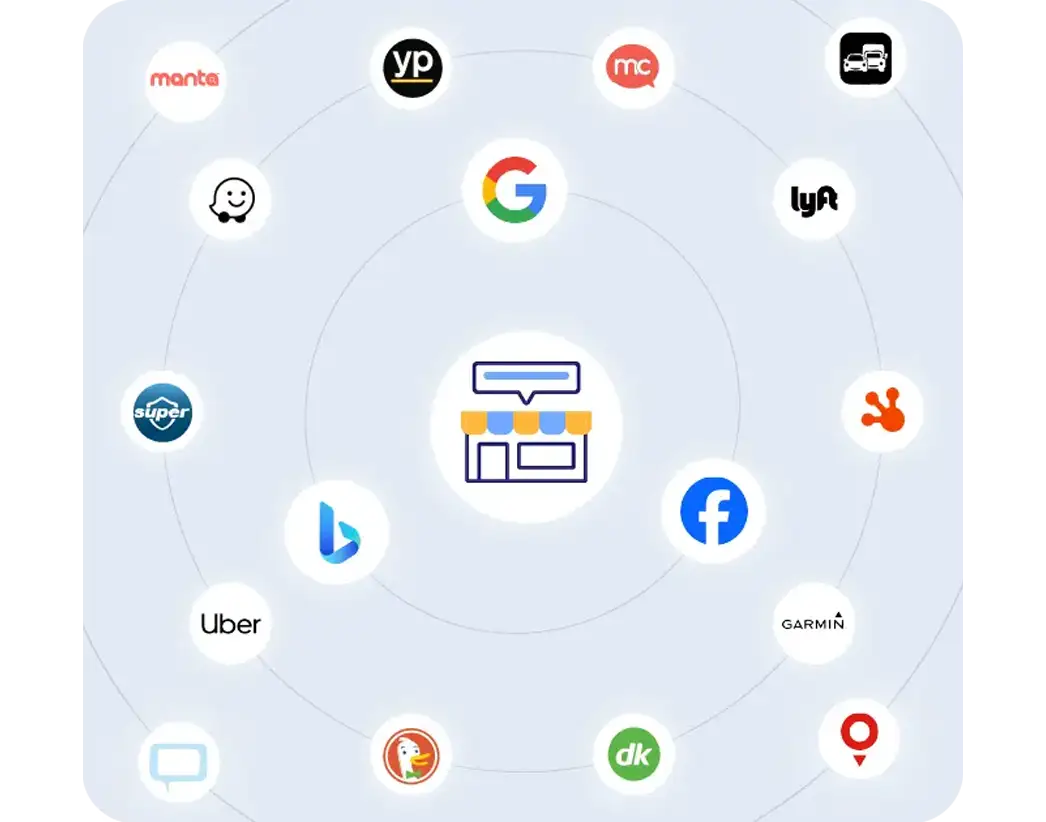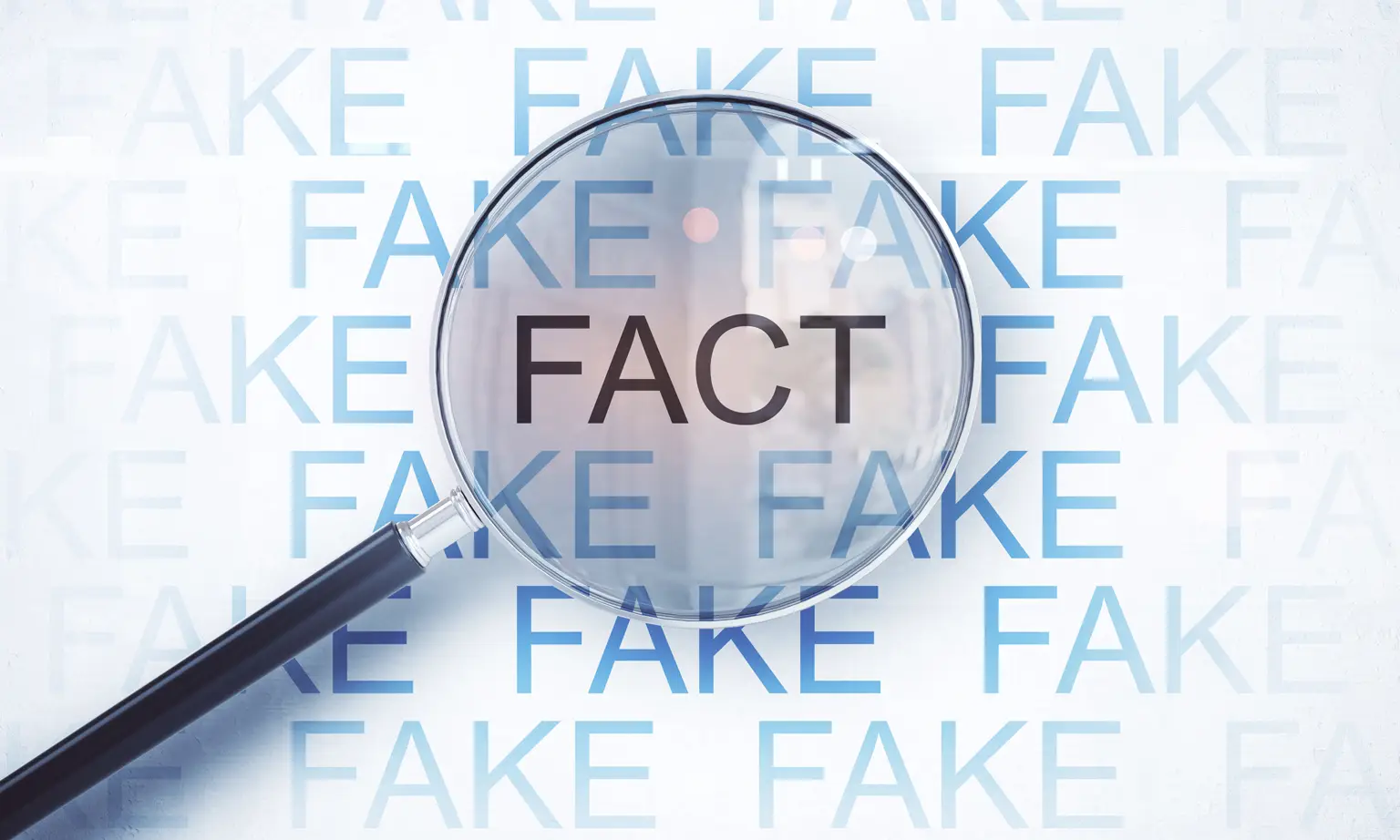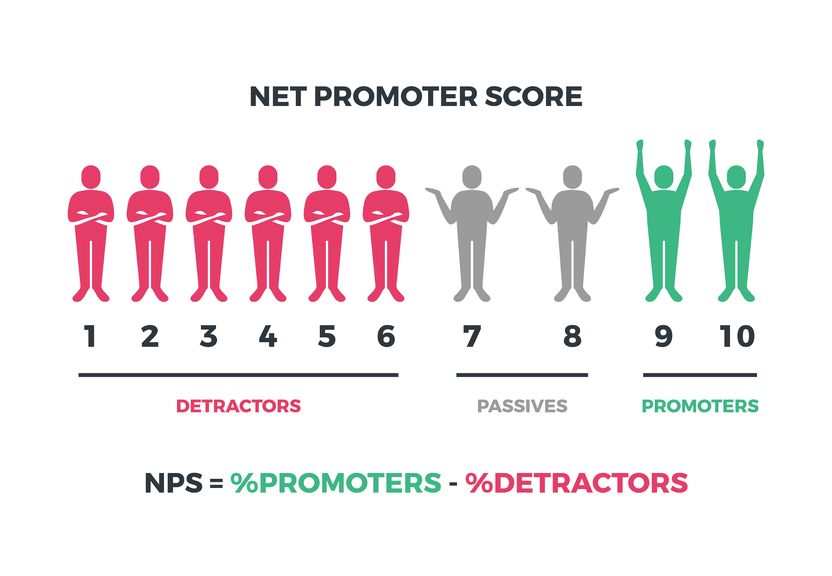
What is the Net Promoter Score?
Aside from the popular Five Star rating system found on most review sites, a popular alternative is the Net Promoter Score (NPS). The rating system chosen by a business can provide very different levels of insight. But what exactly is the Net Promoter Score, and what makes it a good choice as a rating system?
NPS Score

For those unfamiliar with the Net Promoter Score, the rating system is based on a customer rating that ranges from 0 for worst to 10 for best. A rating of 9 or 10 are Promoters, a rating of 7 or 8 are Passive, and a rating of 6 or less are Detractors. Promoters talk about how great your business is, whereas detractors talk about how awful it is. They are not satisfied with the company, will probably not buy again, and may spread negative information about its reputation.
Passives typically take a neutral stance and stay quiet about your business. They are somewhat satisfied but may be easily enticed by a competitor and probably won’t spread the word about a company’s product or services. To arrive at the single-numbered NPS Score, the percentage of Detractor scores is subtracted from Promoter scores. Therefore, NPS can range from as low as -100 to +100. If you have a score of +100, it means that every customer that rated your business is a Promoter. They are fans of the company’s products and services. They are repeat buyers and recommend the company to other buyers.
The Net Promoter Score is a value from -100 to 100 that reflects how much customers trust a business. It is a measure of customer loyalty and satisfaction between a provider (business) and consumer that has been adopted by over 1000 Fortune 1000 companies. Generally, a positive NPS is good, and scores over 70 are exceptional.
How is the Net Promoter Score Calculated?
Customers are asked to provide answers to the single question: How likely is it that you would recommend our company/product/service to a friend or colleague?
Answers are usually based on a 0 to 10 scale.
I don’t know my Net Promoter Score…
Advantages and Disadvantages of Net Promoter Score
While the five-star system appeases analysts and researchers, the Net Promoter Rating System provides more depth. The 11 point (0 though 10) rating system can give the appearance of greater complexity, but it can also steer a consumer away from making a choice. And while ReviewInc does a masterful job of doing so, the full number range for NPS is more challenging to display on a mobile device.
Advantages and Disadvantages of the Five Star Rating System

The Five Star Rating system is by far the most popular and most recognized rating system on the planet. Virtually all review sites use the Five Star rating system. As such, the sheer consumer familiarity with this rating system is a huge advantage. Most adults learned to appreciate star stickers as the award of choice in kindergarten, which bolsters its popularity.
There are a few disadvantages of the Five-Star rating system. First, while the NPS rating allows for a 0, the Five-Star rating system oftentimes does not. What’s more, is the Five-Star rating system doesn’t allow any wiggle room for discerning reviews that like to reserve the perfect score for a select number of businesses. The NPS, however, allows for a customer to give a rating of 9, which is still considered a “Promoter” score.
Other Rating Systems

There are alternatives to the NPS and Five-Star rating systems. The most popular is known as the Emoji Rating Systems. Also known as Millennial Sentiment Scoring, this system offers really a very simple decision, and can even be a binary choice. Are you Happy or Sad? Alternatively, are you Happy, Just OK, or Sad? These rating systems require very little thought and appeal to gut emotions. The theory is that the consumers, inundated with requests for ratings, don’t have to think too much and will quickly provide a selection. Of course, this can lack depth, and it is more difficult to spot small improvements in overall ratings.
What Consumers Say
So which rating system do consumers prefer? We put it to a test of over 3,000 U.S. Internet users. We presented them with images of the rating systems and asked them “When rating your experience with a company or business, which of these rating methods would you prefer to use?”
The result of this survey was surprising. We had expected the simpler rating methods to be more popular. Instead, the Emoji-based systems were the second most popular kinds of rating systems. The Net Promoter Rating system was the least popular. But, by far, the most popular rating system was the familiar Five-Star rating system.
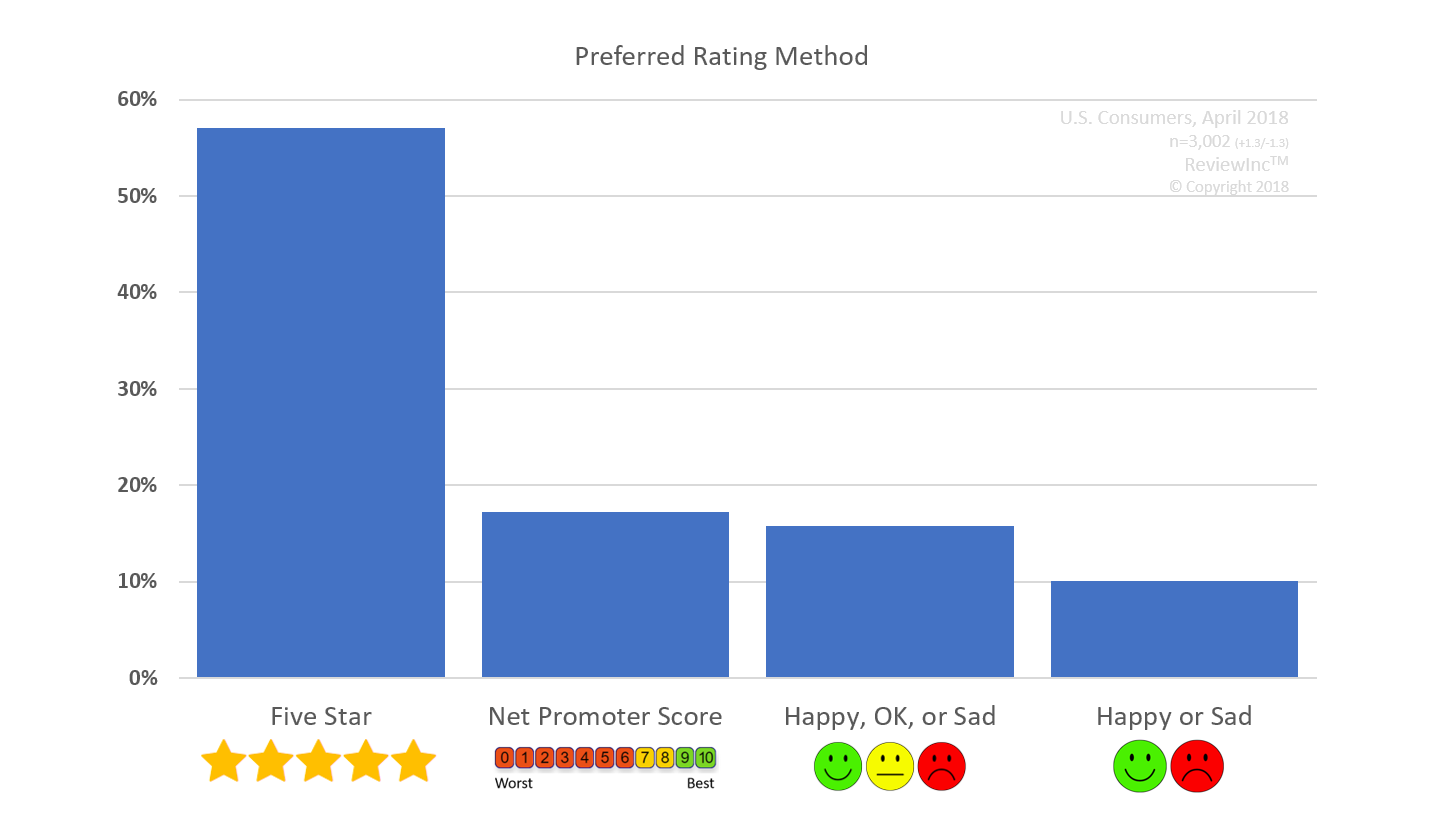 Gender Differences
Gender Differences
Males indicated a higher preference for the Net Promoter Score and a higher preference for the Happy/Sad (i.e. binary) rating system than Females. Meanwhile, females indicated a higher preference for the Five-Star and the Tertiary rating system of Happy/OK/Sad.
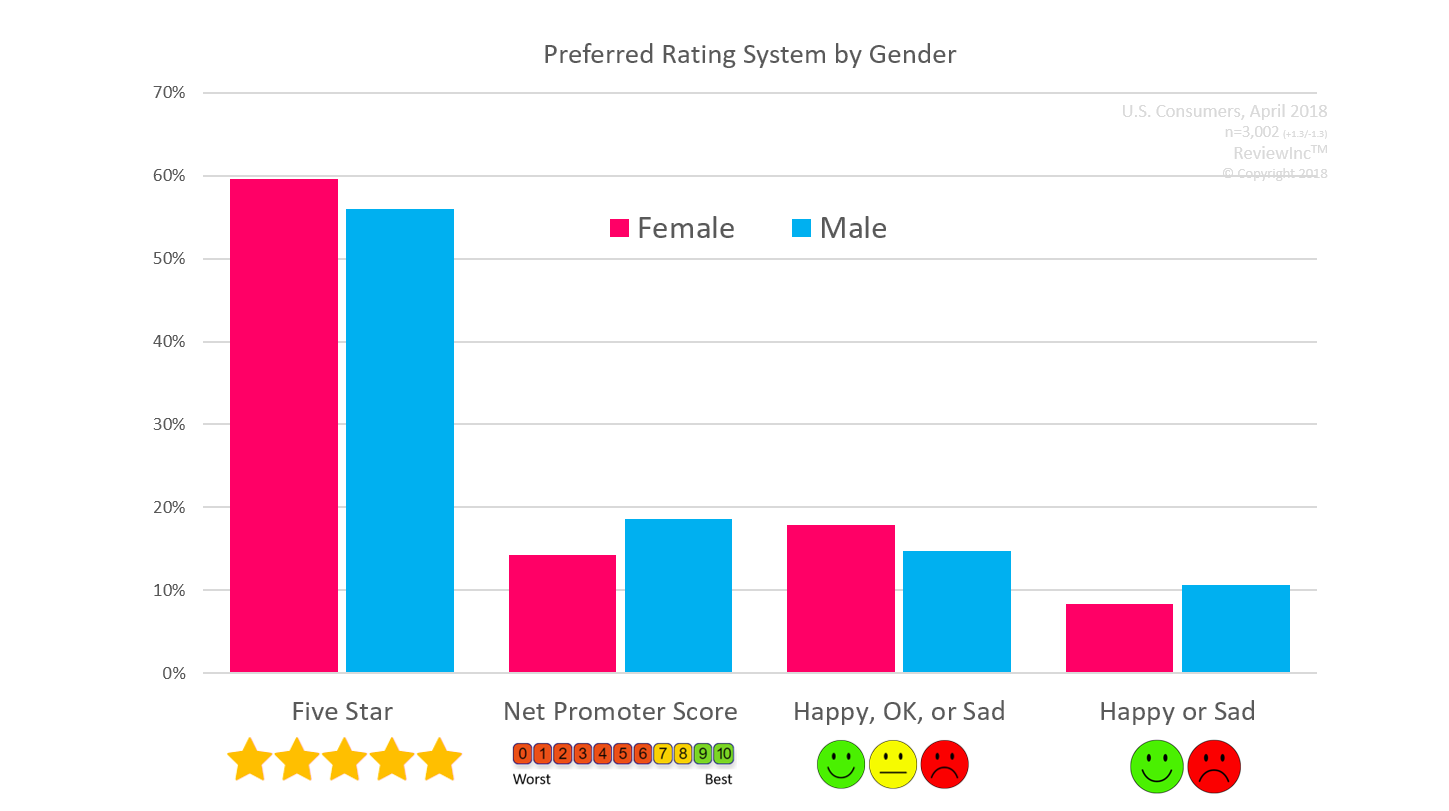 Age Differences
Age Differences
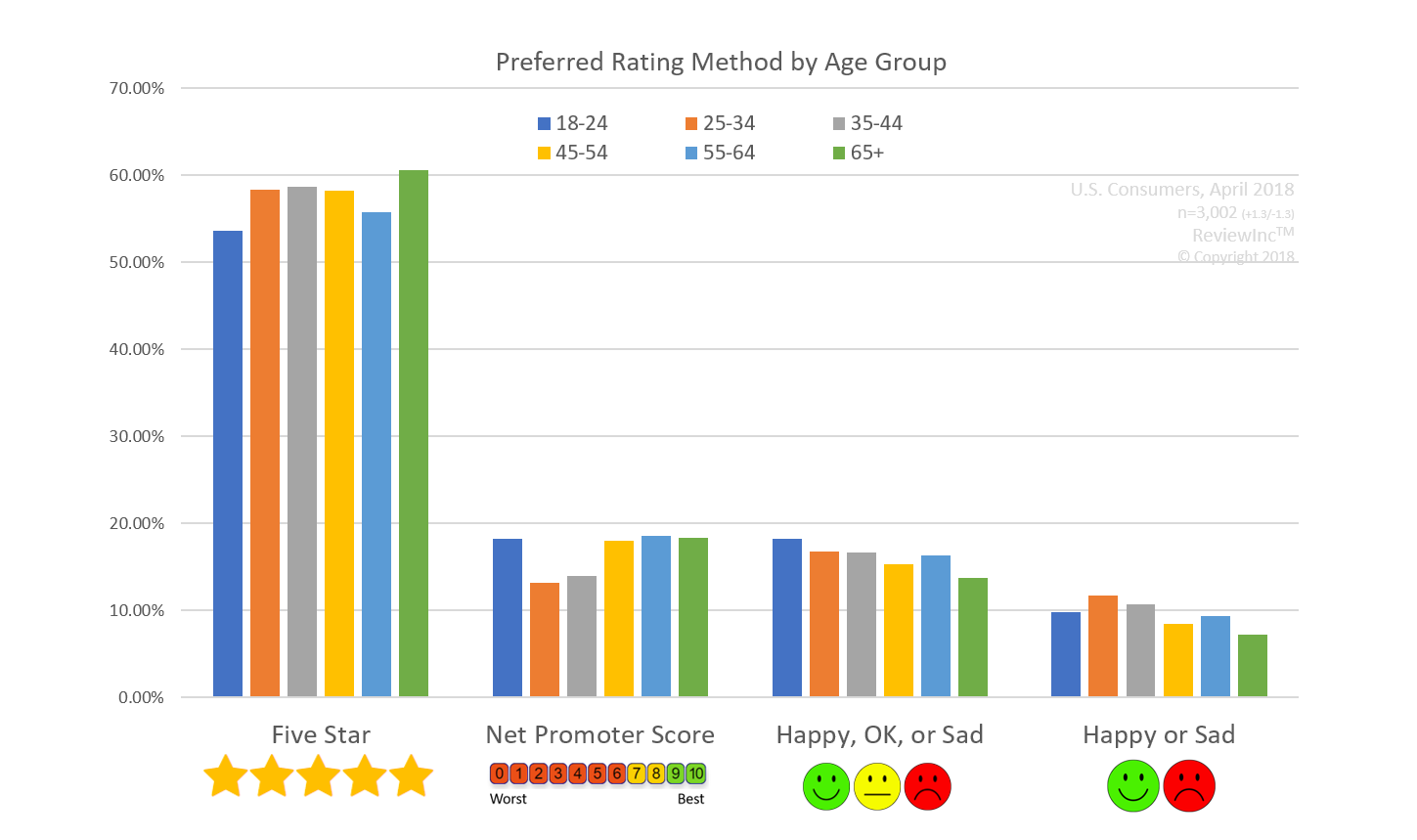
When examining preferences by age group, the results were also insightful. The 18 to 24 year old demographic showed a lower preference for the Five Star system than any other age group. At the same time, they showed the greatest preference for the Net Promoter Score. The 65+ age group showed the greatest preference for the Five-Star rating system and least for the Emoji-based rating systems.
Response Rate
While customers may express their preference for a rating system, their response rate to each rating method was quite different. ReviewInc’s analytics team collects data on how well customers responded (or abandoned) a review request with different rating systems.
ReviewInc offers the option of using any of these rating systems and even allows you to customize colors, shapes, and images. To learn more about the customizations or the response rates, contact one of our online reputation management experts.


